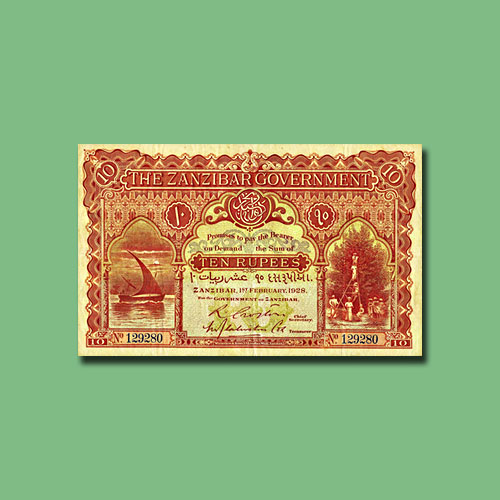Interesting Banknotes Auctioned by Stack’s Bowers Galleries on 11th January
2019-01-22 Tue
Stack’s Bowers Galleries offered some very interesting banknotes of the world on 11th January in New York. One of the highlights was a 5-toman note issued by the Imperial Bank of Iran in 1904, graded PMG Very Fine 25, which was offered at an estimated value of $2,500 to $3,500 but was sold for $13,200. The note was payable at the city of Bushire.A rare £1 note from Gibraltar issued in 1914, graded PCGS Currency Fine 15, was offered at an estimated value of $6,000 to $8,000 but was sold for $13,200. These notes were introduced to replace coins at the beginning of World War I. No such note has been graded by any grading agency. Even though the note had slight splits and tears on the edge, it was sold for a high amount.
A 5-tael note issued by China Empire Board of Revenue in 1854, graded PMG Very Fine 35, was sold for $13,200 against an estimated value of $5,000 to $7,000. The note was fairly uncirculated but has holes and annotations.
A 500-rupee note issued by German East African Deutsch-Ostafrikanische Bank on 2nd September 1912, graded PMG Very Fine 30 Net was sold for $13,200, against an estimated value of $10,000. The note contains rust marks and an ink stain. A similar note in About Uncirculated was sold for $36,000 in August 2018.
A very rare Italian Occupation 50-piastre specimen note, issued in 1942 by Cassa Mediterranea di Credito per l’Egitto or Mediterranean Credit Bank for Egypt, graded PMG About Uncirculated 55, was sold for $13,200, against an estimated value of $10,000. These notes were issued by Italy in World War II before Italy's attempt to capture Egypt and North America. The note depicts a portrait of the Roman Emperor Augustus as Mussolini was trying to compare fascist Italy with imperial Rome.
A quarter-dinar note issued by Iraq in 1931, graded PMG Choice Uncirculated 64 EPQ, featuring a portrait of a young King Faisal II was sold for $12,000, against an estimated value of $1,500 to $2,000.
A uniface 10-rupee note issued by Zanzibar Government on 1st February 1928, graded PMG Very Fine 30, printed in London by Waterlow and Sons, was sold for $87,000. It was the most expensive note to be offered at the Heritage World Currency Signature Auction in Orlando, Florida.
Less than 500 such notes exist today in all denominations and year dates. The first notes of Zanzibar were issued in 1908. The other sets were released in 1916, 1920, and 1928. 1 rupee and 500 rupees notes were issued in 1920 only. 5, 10, 20, 50, and 100 rupees notes were released in 1908 and 1916; and 5, 10, and 20 rupees notes were issued in 1928. All notes featured the same design but their colours were different. The obverse side features an Arab dhow sailing, local workers harvesting cloves and denomination in words.
A 20-balboa specimen note issued by Panama and authorized by President Arnulfo Arias on 2nd October 1941, graded PMG Gem Uncirculated 66 Exceptional Paper Quality, was sold for $38,400. The note features four oxen working. Only a week after the notes were released, Arias was overthrown. The notes were immediately taken out of circulation and destroyed.
Image Courtesy: Stack’s Bowers Galleries
Latest News
-
Mahatma
2024-04-25 ThuIndia Post issued a commemorative postage stamp on #LalaHansraj, also known as Mahatma Hansraj for�...
-
Berar Mint of Muhammad Akbar
2024-04-25 ThuBerar was a kingdom located in the Deccan region, with Elichpur as its capital. It was one of the Su...
-
Janma Kalnayak of Bhagwan Mahavir
2024-04-24 WedOn 21st April 2024 which was the 2550th Janma Kalnyanak of Bhagwan Mahavir Swami, PM Modi unveile...
-
Gold Pagoda of Vijaynagar Empire King Deva Raya I
2024-04-10 WedKing Deva Raya I of the Vijayanagara Empire was a patron of Kannada literature and architecture. He ...
-
Silver Denarius of Septimus Severus
2024-04-05 FriLucius Septimius Severus served as the Roman emperor from 193 to 211 AD. Severus sat on the throne o...

